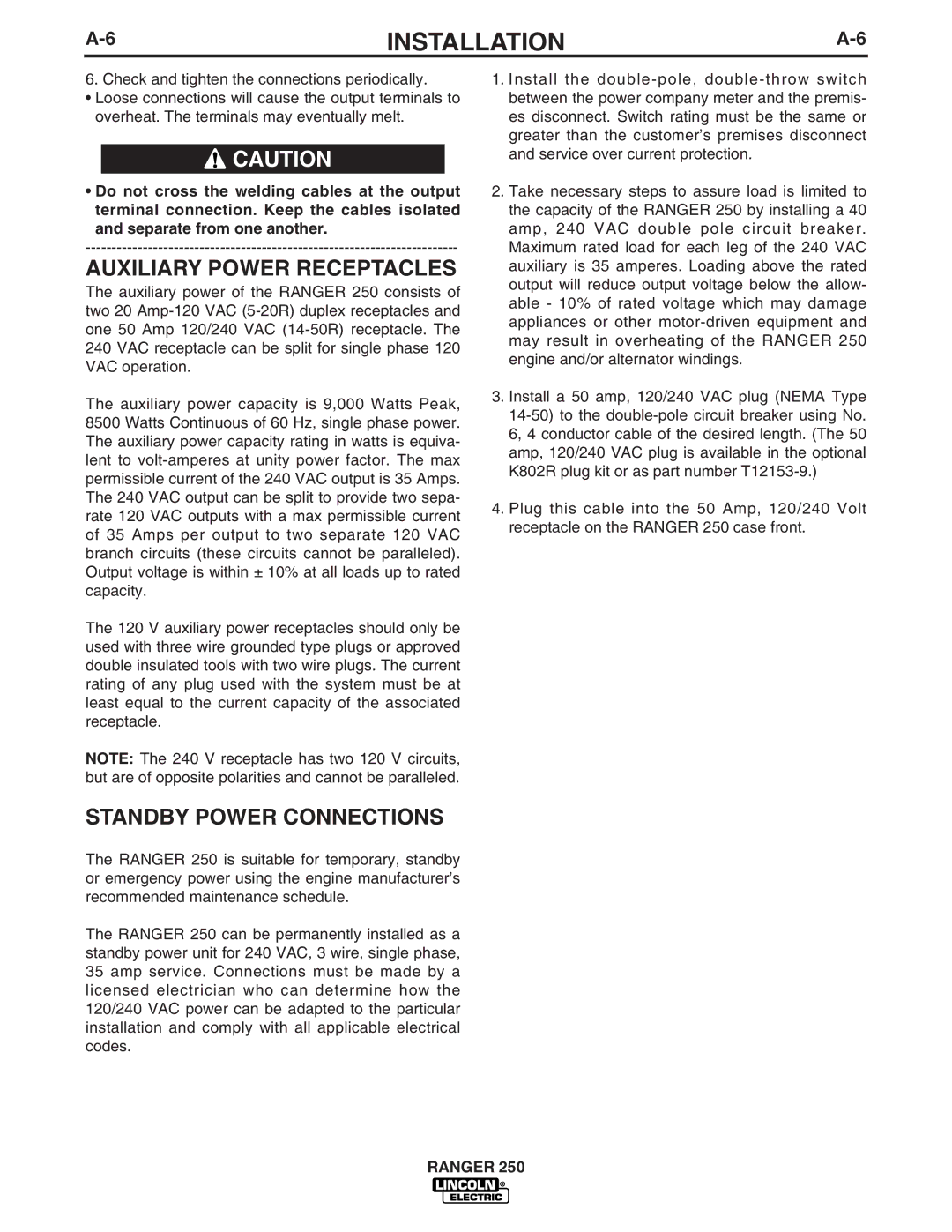
INSTALLATION | ||
|
|
|
6. Check and tighten the connections periodically.
•Loose connections will cause the output terminals to overheat. The terminals may eventually melt.
![]() CAUTION
CAUTION
•Do not cross the welding cables at the output terminal connection. Keep the cables isolated and separate from one another.
AUXILIARY POWER RECEPTACLES
The auxiliary power of the RANGER 250 consists of two 20
The auxiliary power capacity is 9,000 Watts Peak, 8500 Watts Continuous of 60 Hz, single phase power. The auxiliary power capacity rating in watts is equiva- lent to
The 120 V auxiliary power receptacles should only be used with three wire grounded type plugs or approved double insulated tools with two wire plugs. The current rating of any plug used with the system must be at least equal to the current capacity of the associated receptacle.
NOTE: The 240 V receptacle has two 120 V circuits, but are of opposite polarities and cannot be paralleled.
STANDBY POWER CONNECTIONS
The RANGER 250 is suitable for temporary, standby or emergency power using the engine manufacturer’s recommended maintenance schedule.
The RANGER 250 can be permanently installed as a standby power unit for 240 VAC, 3 wire, single phase, 35 amp service. Connections must be made by a licensed electrician who can determine how the 120/240 VAC power can be adapted to the particular installation and comply with all applicable electrical codes.
1.Install the
2.Take necessary steps to assure load is limited to the capacity of the RANGER 250 by installing a 40 amp, 240 VAC double pole circuit breaker. Maximum rated load for each leg of the 240 VAC auxiliary is 35 amperes. Loading above the rated output will reduce output voltage below the allow- able - 10% of rated voltage which may damage appliances or other
3.Install a 50 amp, 120/240 VAC plug (NEMA Type
4.Plug this cable into the 50 Amp, 120/240 Volt receptacle on the RANGER 250 case front.
RANGER 250
